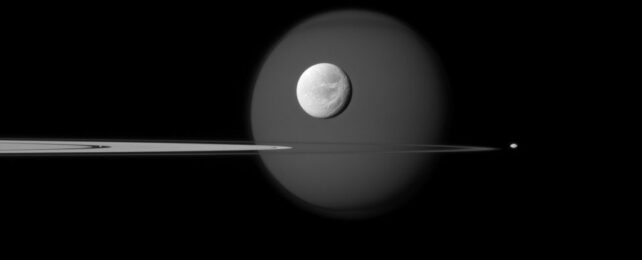Invoking Saturn calls to mind images of the planet's glorious, one-of-a-kind ring system, but that's not all the planet has to offer.
Near-Saturnian space is crowded with moons. We've found 156 to date; a population that has made for some strikingly dramatic photos from the Cassini probe that studied Saturn and its satellites from 2004 to 2017.
Although Cassini plunged into Saturn's tempestuous atmosphere some years ago now, it left behind an extensive catalog of photographs. Some of the most beautiful are those that barely include the planet Saturn, if it's seen at all, highlighting instead the rings that circle its equator, and the moons nearby.
If you didn't know you were looking at an actual photograph beamed from a position more than a billion kilometers from Earth, you might think you were looking at works of science fiction.
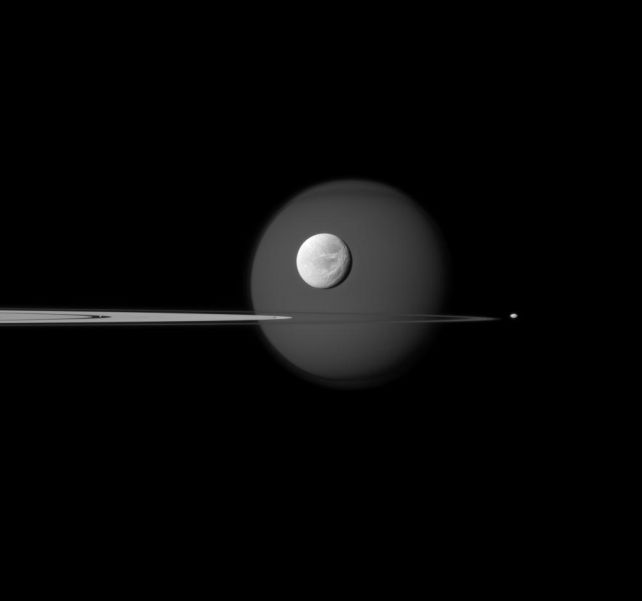
In the image above, four moons of Saturn make an appearance.
In the background, behind the rings, is the hazy moon Titan, one of the most fascinating worlds in the Solar System. It's the only moon known to host a thick atmosphere, below which are lakes of liquid methane which may contain blobs of organic molecules. Beneath that, hidden under Titan's crust, scientists think there might be a global ocean of water and ammonia.
In front of Titan floats the moon Dione, its surface marked by bright cliffs created by the tectonic fracturing of an icy crust which is thought to conceal the moon's own ocean of briny water.
The other two moons are much smaller. To the far right orbits Pandora, just outside the F ring, one of the two tiny shepherd moons that help guide and shape the thin, outermost discrete ring of the extensive system.
And, if you look closely to the left, within the ring system, you'll see a gap. That's the Encke Gap that splits Saturn's large A ring, and it's carved out by Pan, the innermost of Saturn's moons, a tiny chunk of rock that resembles a raviolo.
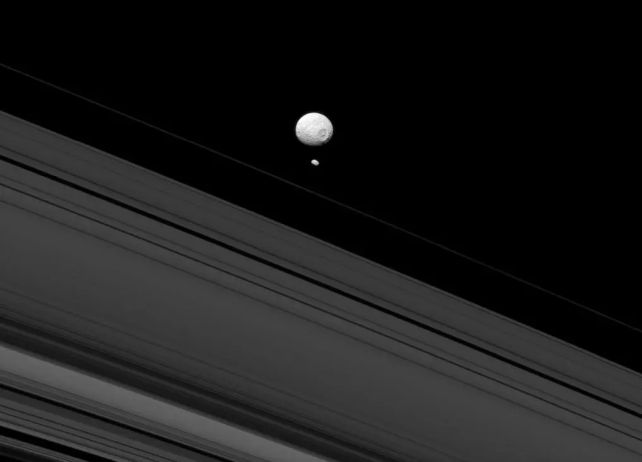
Other favorite images of Saturn's moons include the below "family photo" that, from left to right, captures Janus, Pandora, Enceladus, Mimas, and Rhea, with the edge of Saturn's rings extending through the middle.
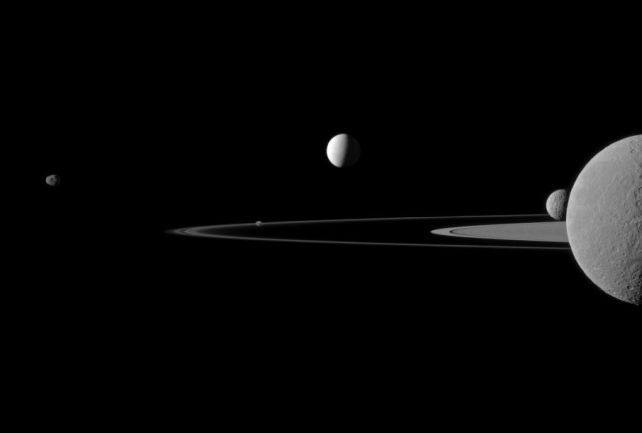
Or the following image showing a back-lit photo of Titan behind the rings, its hazy atmosphere aglow with the light of the Sun that bleeds through. In front floats Enceladus, one of the extraterrestrial bodies in the Solar System thought most likely to host life, hidden away in the ocean that lurks beneath its icy shell.
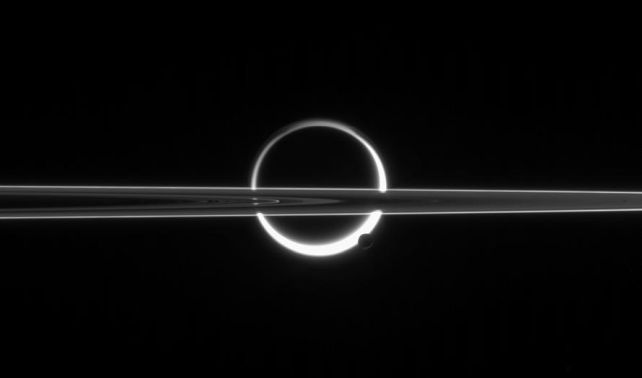
There are a lot of covert oceans lurking in the space around Saturn, it seems.
If you'd like to take a prowl through the Cassini image archives for yourself, you can find them here. Just a word of warning, though: it may wish you were in orbit around the strange planet, peering out the porthole to see the magnificent sights that there abound.
